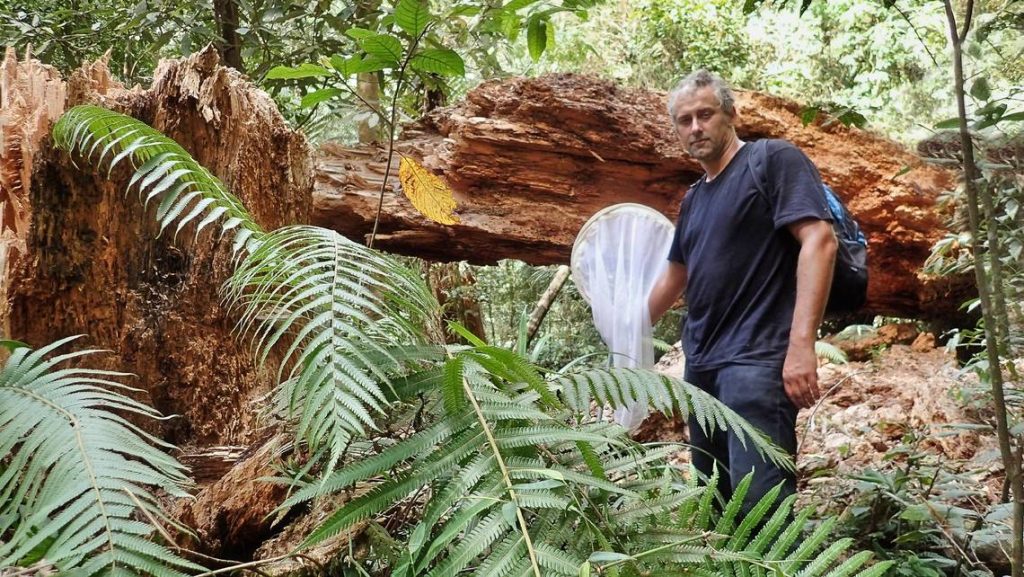Tom Terzin has been fascinated by beetles since he was a child.
“They behave like tiny natural robots,” Terzin said in a Jan. 30 University of Alberta news release. “They crawl around obeying simple rules. If there’s an obstacle in their way they usually go around it, which is generally how a robot would behave.”
That’s why the researcher and biology professor participated in two expeditions to the Philippines to search for beetles and collect samples, he told McClatchy News in a Feb. 2 email.
While sifting through the specimens he collected from Northern Negros National Park on Negros Island, Terzin spotted something unusual, according to the university. It was a short-nosed weevil known as Metapocyrtus (Orthocyrtus) bifoveatus, which was thought to be extinct.
The “colorful” species had not been seen on the island in 100 years. Researchers believed it was killed off after its habitat in the rainforest’s lowlands was “wiped out by deforestation.”
“In the world of insects, it’s almost like discovering a dodo bird,” Terzin said.
Discover more new species
Thousands of new species are found each year. Here are three of our most eye-catching stories from the past week.
→ ‘Dragon’-like creature — with ‘strong’ claws — found near bus stop
→ Pregnant creature — with ‘glossy’ belly — found on road in India
→‘Large’-eyed creature found lurking near a cave in China
The specimen Terzin found is the first female of the species recorded, according to a study published Dec. 8 in the journal Topola Poplar.
The species is “large to medium sized,” Terzin and his co-author, Bangoy Shirley, said in the study. The female beetle measured about 0.5 inches.
Metapocyrtus (Orthocyrtus) bifoveatus have “metallic green and blue scales” on their head beneath oval-shaped eyes, the researchers said. The upper half of their body is “shiny, smooth” and “rusty brown” with a collar covered by “metallic green and blue scales.”
The lower half of the species’ body is “smooth” and “reddish-brown to black.” It is covered in “round metallic mixed green and blue scales,” and it has two “shiny brown spots” on its sides that lack scales.
Photos show the brightly colored new species.

Terzin found the Metapocyrtus (Orthocyrtus) bifoveatus specimen in a rainforest at about 4,600 feet above sea level, according to the study.
“Somehow this species has managed to survive in higher altitudes of over 1,000 meters (3,280 feet), which shows a struggle for life, that they refused to become extinct from deforestation,” he said in the university’s release.
A new species of weevil
Terzin spotted another strange specimen while sorting through his collection from the park: a black bug that didn’t have the same “metallic sheen” as similar weevils.
It was a new species.
“This guy was a bit strange, some sort of rebel in refusing to mimic the species,” Terzin said.
Identified as Metapocyrtus (Trachycyrtus) augustanae, the new species is small, and the single female specimen measured about 0.26 inches, according to the study.

The “small-sized” weevil has a gray-black body with “several prominent yellow” bristle-like protrusions, researchers said. The lower half of its body is “rough,” and its “oval” eyes are black.
Scientists named the new species after the University of Alberta’s Augustana campus, where Terzin works.
The female specimen was found in a rainforest habitat about 4,600 feet above sea level.
Terzin said the discovery of the new species is exciting.
“It could mean there’s a redirection of the habits of these species, evolutionarily speaking, and being only known from a single specimen, for now, indicates it’s probably a rare species,” he said.
‘They’re like asteroids’
Continuing to learn about weevils is necessary because they can possibly become pests, according to Terzin.
“They’re like asteroids that cross the Earth’s orbit,” he said. “Some of them can be dangerous, but they’re even more dangerous if we don’t know about them. So it’s important to monitor their population — and that means we first need to discover them.”
Terzin also encountered a third type of “rare” weevil while visiting Kanlaon National Park in the Philippines, he said in his email.
Known as Eumacrocyrtus canlaonensis, the “large sized” creatures have a “shiny rusty brown” upper body with “dense semi-metallic gray-bluish scales” on their sides, according to the study. Their lower bodies are “dark brown or black, smooth” and “covered in round semi-metallic gray-bluish scales.”
When Terzin was in the park in 2016, the previously dormant Kanlaon Volcano erupted. Since then, the area where Eumacrocyrtus canlaonensis specimens were collected has been closed, according to Terzin.
“My brief encounter with E. canlaonensis may be the last one,” he said.
‘Peculiar’ winged creature found on island mountain turns out to be hairy new species
Pointy-toothed sea creature — a ‘rare’ catch — turns out to be a new species in India
Pregnant ‘odorous’ creature seen on branch above stream. It’s a new ‘cryptic’ species


